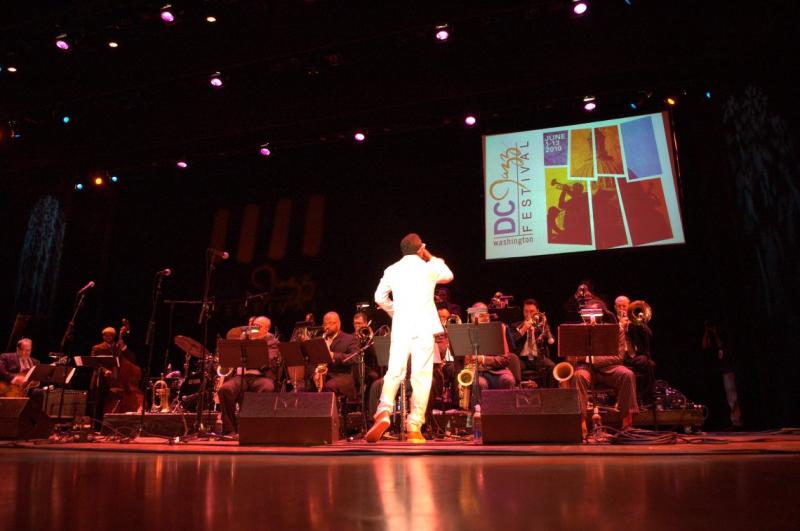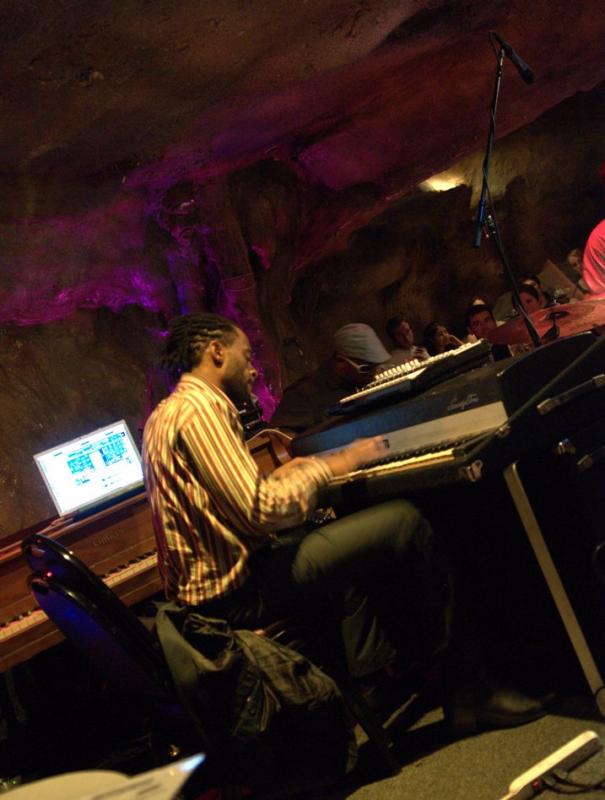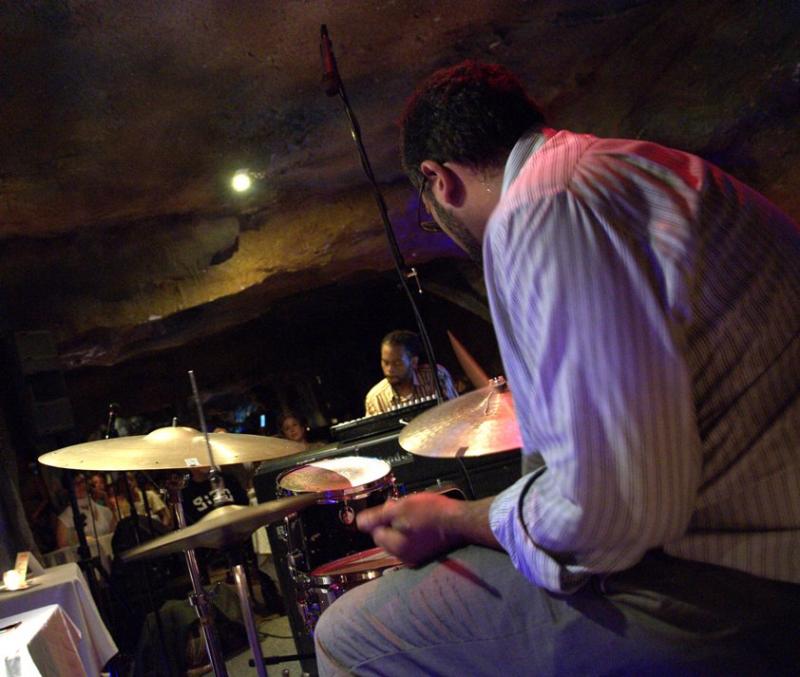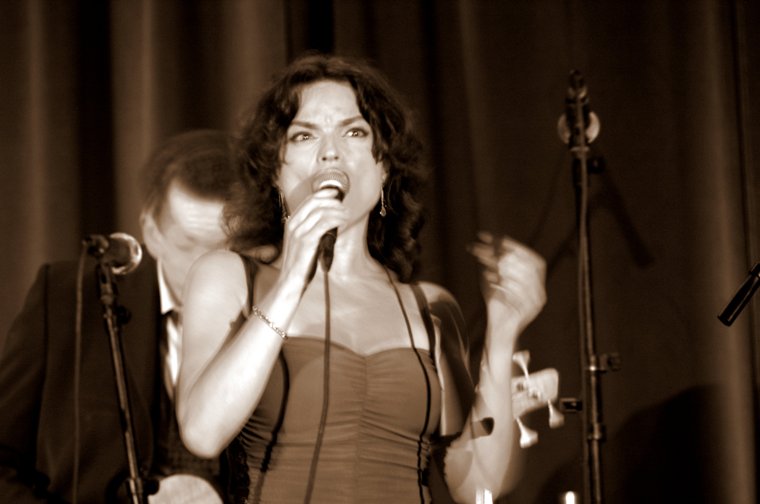Home » Jazz Articles » Live Review » DC Jazz Festival Perseveres Through Sixth Year
DC Jazz Festival Perseveres Through Sixth Year
Washington, D.C.
June 1-13, 2010
The biggest success of the sixth annual Washington, D.C. jazz festival may simply have been pulling it off. Faced with difficult economic times and a rebranding from the Duke Ellington Jazz Festival to the DC Jazz Festival, which according to several sources resulted from a dispute over rights to the festival's name, the event could easily have sputtered out of existence. Instead, festival founder and dedicated impresario Charles Fishman persevered to present another year of satisfying performances spread out across the city's major venues and smaller clubs alike, continuing his mission to reclaim DC's jazz heritage and foster a newly resurgent jazz community in the nation's capital, despite the country's economic doldrums.

Though lacking one of the festival's major attractions in prior years, an all-day free concert on the National Mall, the nearly two weeks of festival events delivered a healthy mix of local talent, new voices, and festival stalwarts. And, as in previous years, organizers provided a diverse menu of genres and venues, including matinee events, educational programs, family-oriented programming, and late night explorations of DC's growing club scene. Premier events included an all-star tribute honoring NEA jazz master James Moody at the historic Lincoln Theater; the debut of the outdoor Carter Baron as a festival venue, featuring Poncho Sanchez and renowned Columbian harpist Edmar Castenada; a multi-concert extravaganza at George Washington University's Lisner Auditorium, showcasing Claudio Roditi, Eddie Palmieri, Roberta Flack, and the Roy Hargrove Big Band; a Kennedy Center performance by Paquito D'Rivera of a commissioned piece "The Jelly Roll Morton Latin Tinge"; as well as numerous outings at local clubs, restaurants, and bars throughout the city, including Bohemian Caverns, which proved repeatedly why it is rapidly becoming the heart of Washington's revived jazz scene.
 In fact, flourishing under the welcoming sense of community that owner-operator Omrao Brown cultivates, the Caverns seemed to play a central role in the festival as a whole. The historic club acted as impromptu rehearsal space, de facto host for after hours jam sessions, and venue for some of the most compelling festival events, including a cutting edge performance by the Marc Cary Focus Trio. A Washington native, pianist and composer Cary was joined by Taurus Mateen on bass and Sameer Gupta on drums and tabla. From opening note, the trio's devilish fusion of jazz, go-go rhythms, and electronica infused the Cavern's intimate quarters with pulsing waves of high energy music. Utilizing piano, keyboards, and laptop, Cary delivered multi-dimensional solo after solo, tune after tune. But perhaps most impressive, the Marc Cary trio has developed into an integrated unit that breaks with almost any traditional descriptor one might attempt to apply. More structured than the classic jazz "group improvisation" trio, yet able to fluidly respond to each other's slightest shift, the trio manifested a wholly unique, fully realized musical world marked by a surging blend of rhythms and dense layers of improvisation. Particularly stirring were the tunes "Behoop" and "Taiwa," on which Gupta switched to tablas to create a sensuous, ceaselessly shifting foundation upon which Cary and Mateen built far-ranging explorations. A peak of the festival by any measure, the Cary Trio exemplified the best aspects of the DC Jazz Festival—great music performed in an intimate setting to a highly appreciative crowd.
In fact, flourishing under the welcoming sense of community that owner-operator Omrao Brown cultivates, the Caverns seemed to play a central role in the festival as a whole. The historic club acted as impromptu rehearsal space, de facto host for after hours jam sessions, and venue for some of the most compelling festival events, including a cutting edge performance by the Marc Cary Focus Trio. A Washington native, pianist and composer Cary was joined by Taurus Mateen on bass and Sameer Gupta on drums and tabla. From opening note, the trio's devilish fusion of jazz, go-go rhythms, and electronica infused the Cavern's intimate quarters with pulsing waves of high energy music. Utilizing piano, keyboards, and laptop, Cary delivered multi-dimensional solo after solo, tune after tune. But perhaps most impressive, the Marc Cary trio has developed into an integrated unit that breaks with almost any traditional descriptor one might attempt to apply. More structured than the classic jazz "group improvisation" trio, yet able to fluidly respond to each other's slightest shift, the trio manifested a wholly unique, fully realized musical world marked by a surging blend of rhythms and dense layers of improvisation. Particularly stirring were the tunes "Behoop" and "Taiwa," on which Gupta switched to tablas to create a sensuous, ceaselessly shifting foundation upon which Cary and Mateen built far-ranging explorations. A peak of the festival by any measure, the Cary Trio exemplified the best aspects of the DC Jazz Festival—great music performed in an intimate setting to a highly appreciative crowd. 
Another highlight and undeniable star of the festival was Roy Hargrove, who seemed to be everywhere at once and playing with unstoppable energy, whether hosting the festival's private gala opening, holding forth at late night jam sessions, or closing the marathon concert at the Lisner in flamboyant style with his big band. A sample of his activities paints a portrait of Hargrove's versatility as a player and performer. At the gala opening, Hargrove led 15-year old pianist Tony Madruga, Cyrus Chestnut, and long-time Dizzy Gillespie bassist John Lee in an informal set of tunes ,including classics like a sultry "'Round Midnight" on which Hargrove shown with his patient playing on flugelhorn. The group was then joined for a selection of vocal pieces by Roberta Gambarini who's technically adept, but emotionally absent singing was salvaged only by a seemingly impromptu spate of traded scat with Hargrove, proving simultaneously his flexibility and sense of fun. Cut next to the Roy Hargrove big-band, which took the stage following the Latin themed performances of Claudio Roditi and Eddie Palmieri, both of which had patrons dancing in the aisles, as well as a singular outing by local diva Roberta Flak.
One might think it would be hard to follow these three acts—either their combined musicality or energy. But leave it to Hargrove to overcome the challenge. Clad in all white—from thick rimmed sunglasses to converse high tops—Hargrove hit the stage with a bang, racing his big-band, dressed in contrasting all black, through a rambunctious, thoroughly hip opener that threatened to blow the roof off. Not only was the band loud, it was truly big, comprised of everything from a powerful frontline, to guitar, to congas. Combining traditional swing with urban grooves and modern textures, Hargrove blasted through one tune after another, all the while adding a level of showmanship that could have come straight out of a Cab Calloway playbook. Hargrove strode across the stage with commanding steps, he twirled on his heels, he conducted with big, sweeping gesticulations, heralding in finales with a leap and arms held wide as the stage lights flashed. Fortunately, the quality of the music more than matched Hargrove's flare and the combined effect of the swinging grooves and Hargrove's sparkling solos left the crowd clapping and shouting for more.

Asked about his multi-faceted participation in the festival, Hargrove made clear that his engagement with the event arose from his respect for festival organizer Charles Fishman. "I've known Charles Fishman for years. Me and him go back to the days when he was working with Dizzy. So that's really it. Whenever he's doin' something, I try to stay actively involved, because he's one of the few people left who really believes in the music... I am just glad to be part of something that represents something real, that has real musical roots."
This same sentiment of camaraderie was reflected in the festival's closing concert at the Kennedy Center, the presentation of a work commissioned specifically for the festival and performed by festival artistic advisor and long time friend of Fishman, Paquito D'Rivera. Titled "The Jelly Roll Morton Latin Tinge Project," and the result of an NEA Chamber Music grant, the project featured new arrangements of Morton composition by music director Michael Philip Mossman. Performed by D'Rivera, Mossman, percussionist Pernell Saturino, a string quartet, and a flamenco dancer, the series of arrangements explored the Latin influence on Morton's original works. Revealing technical mastery and a deep appreciation for jazz music's complex origins, the evening could have suffered from undo pretention. However, in keeping with D'Rivera's inimitable style the whole affair resonated with humor, enjoyment, and a certain casual artistry that drew the audience in to the admittedly somewhat esoteric endeavor. Particularly engaging were the cleverly arranged renditions of Jelly Roll Blues, on which Rivera gave a classy, blues tinged solo, "Black Bottom Stomp," and the evening's piece de resistance, "Wild Man Blues." On this last not only did each of the strings participate in a round of solo trading, but the reason for the flamenco dancer's attendance finally became clear as she stomped and kicked in time to the beat, her body twisting sensually as if tied by invisible strings to Rivera's clarinet.

A satisfying conclusion to the festival, the evening's music fulfilled the all-inclusive nature of the DC Jazz Festival which provided audiences access to everything from cutting edge experimentation, to traditional jazz, to the classical-jazz blend of the Morton project. More telling, perhaps, was the sense of friendship and community that permeated all these events. Certainly, the DC Jazz Festival would benefit from expanding its repertoire even further and perhaps could rely a little less on Fishman's long-standing friendships to fill out the roster, but in the end it is hard to complain about music of this quality delivered with such honest graciousness. For unlike at other, bigger festivals, the DC Jazz Festival makes one feel a part of the show and the two weeks' of events seem more an invitation to take part in Washington's evolving musical scene than a one-time happening.
Photo Credit
Liz Medina Chiomenti
< Previous
Tapestry Unravelled
Next >
siLENT Z Live
Comments
Tags
DC Jazz Festival
Live Reviews
Franz A. Matzner
United States
James Moody
Poncho Sanchez
Claudio Roditi
Eddie Palmieri
Roy Hargrove
Paquito D'Rivera
Marc Cary
CYRUS CHESTNUT
Roberta Gambarini
Michael Philip Mossman
For the Love of Jazz
 All About Jazz has been a pillar of jazz since 1995, championing it as an art form and, more importantly, supporting the musicians who create it. Our enduring commitment has made "AAJ" one of the most culturally important websites of its kind, read by hundreds of thousands of fans, musicians and industry figures every month.
All About Jazz has been a pillar of jazz since 1995, championing it as an art form and, more importantly, supporting the musicians who create it. Our enduring commitment has made "AAJ" one of the most culturally important websites of its kind, read by hundreds of thousands of fans, musicians and industry figures every month.






















